Registered Massage Therapy
“The practice of massage therapy is the assessment of soft tissue and
joints of the body and the treatment and prevention of dysfunction, injury,
pain and physical disorders of the soft tissues and joints by manual and
physical methods to develop, maintain, rehabilitate or augment physical
function to relieve pain and promote health.” – Proposed scope of practice
definition for massage therapy
Mikaela uses a blend of techniques to try and give the most effective treatments for her
clients. These techniques include:
Myofascial release – Uses specific holds to target the release of fascia to help relax
contracted muscles, decrease pain and improve blood flow.
General Swedish – As the foundation of massage, these techniques use deep long
strokes to promote circulation and relaxation of muscles.
Trigger point therapy – Uses a specific hold, pressure or stretch to target
the release of a “trigger point” often giving the patient immediate relief
pain and can increase range of motion at affected joints.
Muscle energy technique – is a variety of techniques aimed at improving musculoskeletal
function and decreasing pain by activating the patients muscles in a very specific
way to affect the alignment of a joint or increase range of motion.
Passive and active stretching techniques – Using specific stretching holds
both during the treatment and for homecare to amplify the effects of the treatment.
Joint mobilizations– uses passive movement of a joint to increase joint
space and nutrition, increase range of motion and decrease pain.
Craniosacral Therapy– uses gentle pressure techniques applied to structures directly affecting
the craniosacral system (the system encompassing your brain and spinal cord). These techniques are used to
help release deep tension, relieve pain and promote health of the central nervous system and the body as a whole.
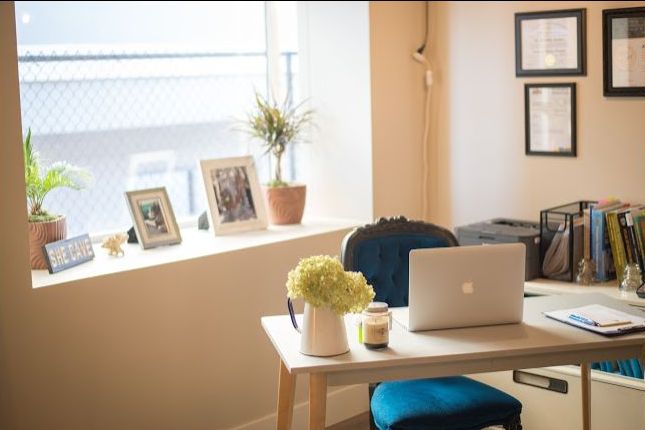
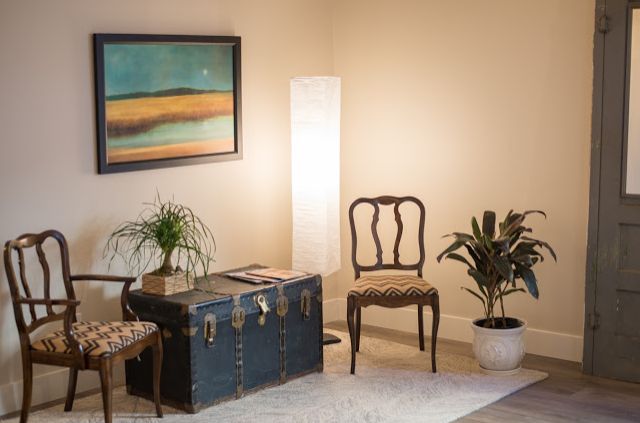
Mikaela believes that educating her clients and giving them appropriate
exercises to perform at home is a key part of massage therapy treatments. Her goal is
to support and work together with each client to make sure they receive a
safe and effective treatment.
Her passion throughout school was, and still is, learning about
musculoskeletal anatomy and kinesiology as they are the foundation of
movement and support in the body. Understanding how each muscle, ligament,
bone, etc. works not only individually, but together is not only fascinates
her, it helps her create effective and efficient treatments.
What to expect from your massage treatment:
- Interview and assessment of the area of concern where she will work with you to create a plan and goals for the treatment (up to 10 min)
- Treatment of areas of concern
- Homecare stretch and strengthening exercises and reassessment (up to 5 min)
Equine Massage Bodywork
Equine massage bodywork is massage specifically designed for
horses. As it is increasing in popularity, more and more horse owners
are realizing the importance of bodywork for their horses.
Equine massage bodywork can play a significant role with:
- Healing or maintenance of an injury
- Soreness associated with strengthening and conditioning
- General soreness issues (usually with a root problem that needs addressing)
- Injury prevention
- Increasing circulation
- Improving movement and flexibility
- Behavioral issues related to physical problems
Horses, like people, become sore, tense, and stressed for different reasons. Once they understand you are trying to help them they are amazing at communicating in their own way, and will often tell you where the problem is.
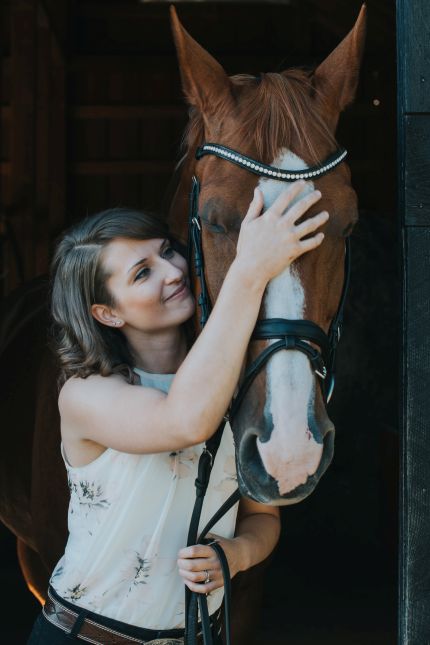
What to expect from an equine massage:
Typically a equine massage includes a gait assessment and a full body assessment
to start. From there your practitioner will pick areas to treat and focus on.
Either your horse or their level of soreness determines the areas chosen.
Time constraints can be very difficult to put on a horse; each
horse settles into a massage in their own way. The length of treatment may be limit the horse’s treatment based on time. She bases her sessions on how
different for each horse and each practitioner.
Initial visits may take up to 2 hours; however, often the average treatment
takes between 1-1.5 hours.
Please note that equine massage bodywork does not replace veterinary
care. If you have any concerns please contact your veterinarian.
It's important to find a practitioner who approaches each equine massage
with the question of
“why is this horse sore?”. We as horseback riders introduce and control
so many things in the horse’s world such as: saddles, riding accessories,
riding styles, conditioning techniques, etc. Each of these things play a
huge role in the maintenance and training of your horse, and if one of
these parts is not working it may create a physical issue. We have to keep
in mind that we may indirectly be the reason behind the horse’s issues,
and we need to be willing to intervene and change whatever that may be.
These must be kept in mind while treating a horse.
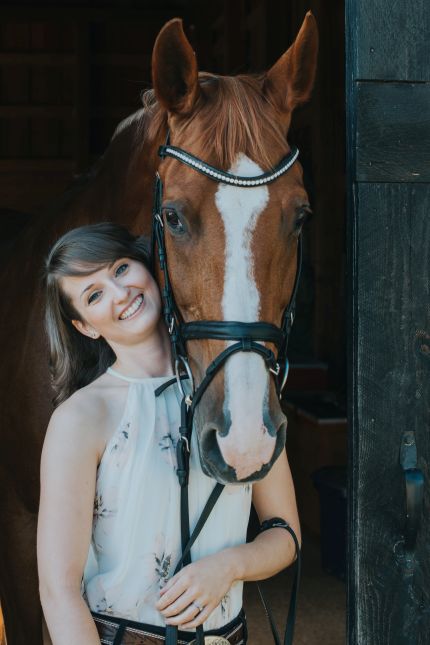
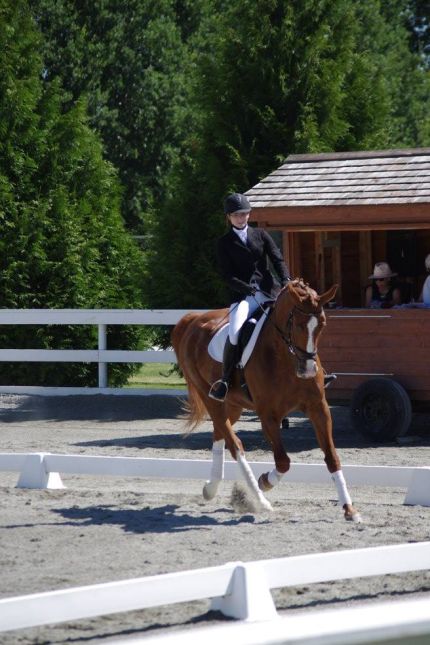
About Our Therapist
Mikaela Schubkegel moved from Sidney B.C. to Kamloops in July 2017 with her husband. Having spent
most of her life on Vancouver Island, Mikaela decided it was time for a change. She is currently
finishing her Bachelors of Health Science Degree at Thompson Rivers University with ambitions
to continue into physiotherapy. Mikaela graduated from the 3000 hour Registered Massage Therapy diploma
program at the West Coast College of Massage Therapy and has been a registered massage therapist since 2014.
Since then she has continued her education through many courses. She Has achieved
Level 2 Craniosacral Therapy training through the Upledger Institute and viceral manipulation level 1 through the Barral Institute
Having worked in both a chiropractic clinic and a physiotherapy
clinic previously, Mikaela has tried to absorb as much as she could from the experienced therapists
surrounding her. Her clinical experience has taught her a lot about both chronic pain management
and effective treatment for acute injuries. She believes that educating her clients and giving
them appropriate exercises to perform at home is a key part of the treatment. Her goal is to
support and work together with each client to make sure they receive a safe and effective treatment.
When Mikaela is not working with clients you will most likely find her working with horses.
Horses and riding have been a passion of hers for as long as she can remember. Mikaela
focuses her riding in the discipline of dressage and has shown up to level 3, schooling 4th level and
intermediate movements.
She has also spent 4 years semi-focused on jumping, schooling up to 3'6. Mikaela loves working with horsebackriders
to help them improve their riding and recognise themselves as the athletes they are.
Along with riding regularly, she has taken separate, private training in equine massage bodywork.
While recently retiring from her equine massage bodywork due to the physical nature of the work,
she has been thrilled to begin learning natural horsemanship skills to better her relationship with horses.
.